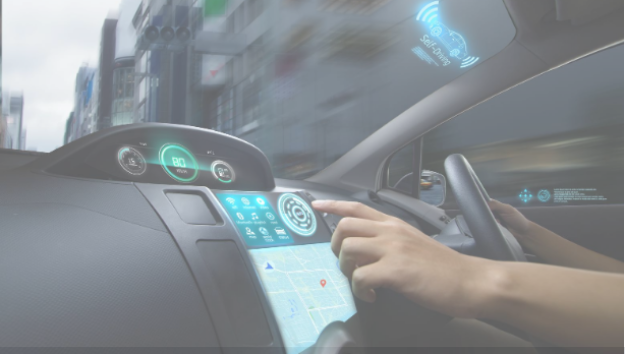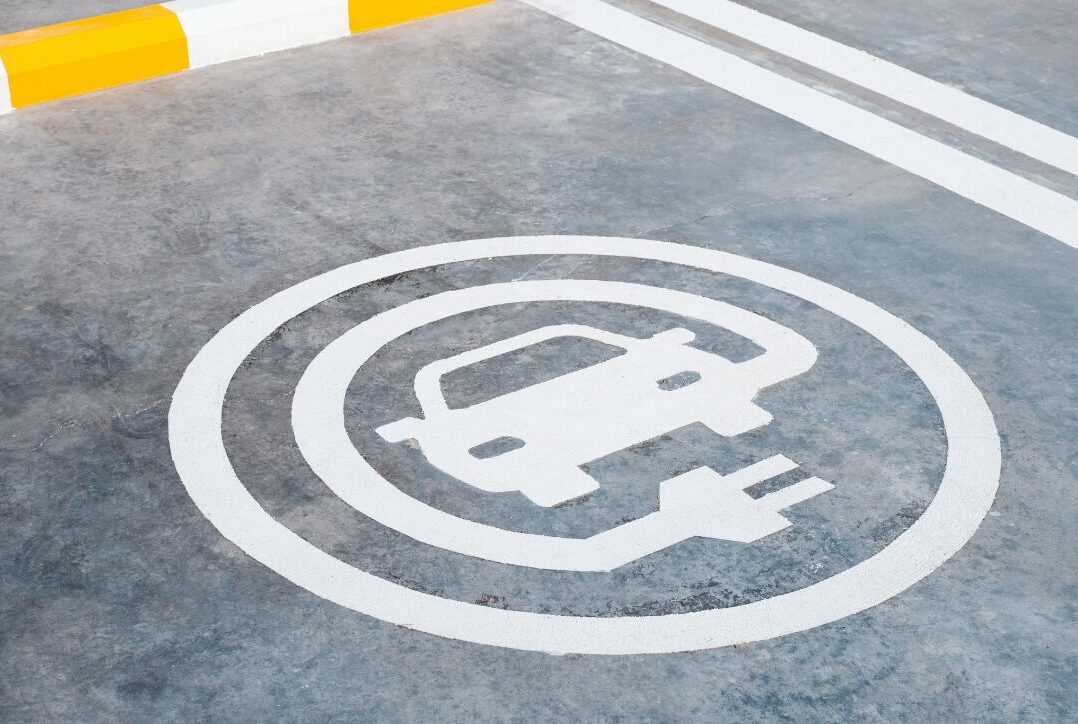Up until a few years ago, autonomous driving faced quite a bit of skepticism and was perceived by the public as a radical technology, far ahead of the times.
However, all of a sudden, cars actually started steering themselves. Public views quickly changed in 2017 when Tesla’s Enhanced Autopilot introduced mind-blowing features like traffic-aware cruise control, autosteer on divided highways, along with semi-autonomous navigation on certain roads.
Along with Tesla, many automakers started applying similar technologies to their vehicles. The speed of the rollout of new autonomous features quickly accelerated. As of 2020, most newly manufactured vehicles contain at least one autonomous feature, and industry experts expect autonomous vehicles to be available for mass consumption by the mid-2020s.
Therefore, over the next decade, we are likely going to see an increasing number of autonomous vehicles sharing our roads, though with a wide range in terms of the level of autonomy. This is because, despite how it may seem to the public, just because a vehicle may be manufactured with one or two autonomous features, does not mean that it is a fully autonomous vehicle. Depending on the level of autonomy, regulations on how the driver becomes a part of the driving process may differ.
The Society of Automotive Engineers (SAE) utilizes a scale that defines six levels of vehicle autonomy, ranging from Level 0 (fully manual) to Level 5 (fully automated). This scale has been officially adopted by the US Department of Transportation, and is currently used universally by regulators and manufacturers worldwide as the de facto standard for autonomous vehicle grading. Here are the six levels of autonomous driving and where we are at currently.

Level 0 – No Automation
Today, around half of the vehicles (depending on where you live) on the road still belong to this category because most vehicles manufactured prior to the mid-2010s likely had no autonomous features.
Level 1 – Driver Assistance (2014~)
Key Aspects: Advanced Driver-Assistance Systems (ADAS) with Power Control or Steering
The two basic inputs that control a car’s movement are power and direction. Power is controlled by the accelerator and brake pedal, while direction is controlled by the steering wheel.
At the lowest Level of autonomy, Level 1, an autonomous vehicle is able to assist the driver in either power control or steering, but not both. Even if both systems exist, they work independently and do not communicate with each other.
This includes vehicles with adaptive cruise control (maintaining a safe distance from the car ahead) as well as lane keep assist and automatic lane centering. Still, such features are not meant to be relied on fully, as they are designed only to assist the driver, allowing them to use less force when steering or stepping on the brake or accelerator.
Market Situation. Around 2014, major manufacturers began adding features to their luxury models that would qualify them as Level 1 autonomous vehicles. Over the next few years, these features were gradually applied downwards to the economy models. Most cars made in 2020 are at least Level 1 on the scale of autonomy.
Level 2: Partial Automation (2017~)
Key Aspects: Advanced Driver-Assistance Systems (ADAS) with Power Control and Steering
Level 1 and Level 2 autonomy do not differ much in terms of technology. The only difference is that Level 2 vehicles have a more complete ADAS, enabling power control and autosteer simultaneously. Additionally, these systems can communicate with each other to ensure a smoother driving experience. For example, a car can slow itself down when the lane curves ahead.
Although a Level 2 autonomous vehicle can adaptively cruise on the road while keeping itself in lane, it cannot make lane changes or turns (unless the turn is guided by visible lanes on the ground). In theory, the driver could take their hands off the wheel and expect the car to drive without issues on highways. However, the car still requires the driver to keep their hands on the wheel and pay full attention to the road in case of unmanageable situations. Depending on the manufacturer, these cars sound alarms and disengage the autonomous features if the driver keeps their hands off the steering wheel for too long (usually between 10 to 20 seconds).
Market Situation. Tesla is one of the first manufacturers to bring Level 2 autonomous driving to the market. Starting in 2017, Tesla’s Enhanced Autopilot was slowly integrated into all their models. As of 2019, all Tesla models are equipped with Enhanced Autopilot. Other technologies competing with Tesla include Mercedes-Benz’s Drive Pilot, Cadillac’s Super Cruise, and Volvo’s Pilot Assist.
Level 3: Conditional Automation (2020~)
Key Aspects: Automated Driving System (ADS) with Environmental Detection
The jump from Level 2 to Level 3 is considered a significant breakthrough. So far, up to Level 2, the human driver takes primary control while the system provides secondary assistance. Starting at Level 3, the system acts as the primary driver while the human is only expected to override when it asks for assistance.
Level 3 autonomous vehicles are equipped with highly sophisticated sensors that are aware of complex traffic situations and environmental hazards, and the system is also able to respond to most situations. The vehicles use GPS mapping to self-navigate the road, and analyze the speed and distance of vehicles in neighboring lanes to safely make lane changes. Nevertheless, human override is still required in highly complex situations, such as congested traffic during rush hour.
Market Situation. In late 2018, Audi introduced the world’s first Level 3 autonomous car – the 2019 Audi A8, featuring Audi’s Traffic Jam Pilot system. Unfortunately, due to the current lack of cybersecurity standards for autonomous vehicles, US regulators demanded Audi to remove the Level 3 software components, downgrading it to a Level 2 vehicle for the US market. Apart from Audi, Tesla’s Autopilot also claims to have reached Level 3, along with the 2020 Mercedes-Benz S Class, followed by the 2021 BMW iNEXT.
Where We Are Now. The technology needed for Level 3 is indeed ready, but regulations and standards are lagging behind. Due to regulatory issues, we are currently stuck somewhere near Level 2.5.
As expected, when computer systems start to gain primary control of vehicles, cybersecurity concerns must be addressed. This is why AUTOCRYPT has been working closely with other members of the 5G Automotive Association (5GAA) in developing a set of international standards on automotive cybersecurity.
The good news is that the industry is very close to solving the problem. After the Road Vehicle Functional Safety Standard (ISO 26262) was established in 2018, the Road Vehicle Cybersecurity Engineering Standard (ISO 21434) is expected to be finalized by the end of 2020.
Japan and South Korea are some of the big markets that have recently approved the sale of Level 3 autonomous vehicles. South Korean automakers Hyundai and Kia are also finalizing their Level 3 technologies. By 2021, the market could expect a new wave of Level 3 vehicles.
Level 4 – High Automation (2023~)
Key Aspects: Automated Driving System (ADS) with Environmental Detection and Monitoring
Although we are somewhat stuck in terms of leveling-up, once Level 3 is deployed, Level 4 autonomy is not far from reality. Apart from enhanced sensors and environmental monitoring, these vehicles are supported by countless 5G connections that allow them to communicate in real-time with other vehicles on the road, with traffic lights, pedestrians, and so on – exactly why the V2X network is key to a highly automated road system. AUTOCRYPT, with its encryption and authentication technologies, provides a comprehensive solution to secure these connections, ensuring that drivers and vehicles are safe from hacking and data leaks.
Being highly autonomous means the vehicles are programmed to make logical decisions. Thus, Level 4 autonomous vehicles cannot perform acts considered to be dangerous driving, such as speeding or running traffic lights. If a driver wants to do these things , they would need to disengage the system in order to do so. Level 4 vehicles also require manual override under extreme weather and terrain, such as when there is low or no visibility, or when a driver wants to go offroad. However, these situations should be very rare.
Market Situation. Level 4 autonomous vehicles are expected to go on the road between the early and mid-2020s. However, rollout is more likely to begin with taxis and ride-sharing services, as it is likely to take a few more years for the mass consumer market to adapt to the change.
Level 5 – Full Automation (2025~)
Key Aspects: Automated Driving System (ADS) with No Human Driver
These are the very vehicles seen in Sci-Fi movies that many associate with autonomous vehicles: no steering wheels, operating fully on their own, and no driver – just passengers.
Market Situation. Level 5 autonomous vehicles are expected to be ready by the mid-2020s. Since there is no override option, a Level 5 vehicle cannot be a stand-alone product in itself. Similar to how a smartphone cannot be used without a cellular network, a constant 5G internet connection along with an intelligent transportation system is mandatory for Level 5 vehicles to function properly and safely. Therefore, these vehicles are expected to start out in restricted areas with smart infrastructures in place. For example, they are very likely to be deployed in certain areas for public transportation and ride-sharing, replacing taxis and buses.
Level 5 vehicles are unlikely to replace our personal cars because most people will still want the freedom to drive manually from time to time. Therefore, a Level 4 vehicle would be much more appealing to the mass market. At the end of the day, public roads will most likely host a mix of Level 4 and Level 5 vehicles.
AUTOCRYPT’s Role in Autonomous Driving
In the traditional IT industry, while it is necessary to implement security measures for network safety, it is not a prerequisite, meaning security software is not pre-embedded into the products. However, in the automotive industry, cybersecurity is absolutely a prerequisite because the negative consequences of a cyberattack could directly lead to the loss of lives.
This is why as we move into the era of Level 3 autonomy, we can expect an increased number of laws and regulations on automotive cybersecurity, ensuring that manufacturers have cybersecurity measures built into the vehicles.
AUTOCRYPT is currently working with a number of manufacturers and leaders in the automotive industry to not only provide a comprehensive automotive security solution, but also draft and implement global regulations and policies that will ensure that security is in place to keep all parties safe on the road.
To learn more about AUTOCRYPT’s security solutions, click here.



